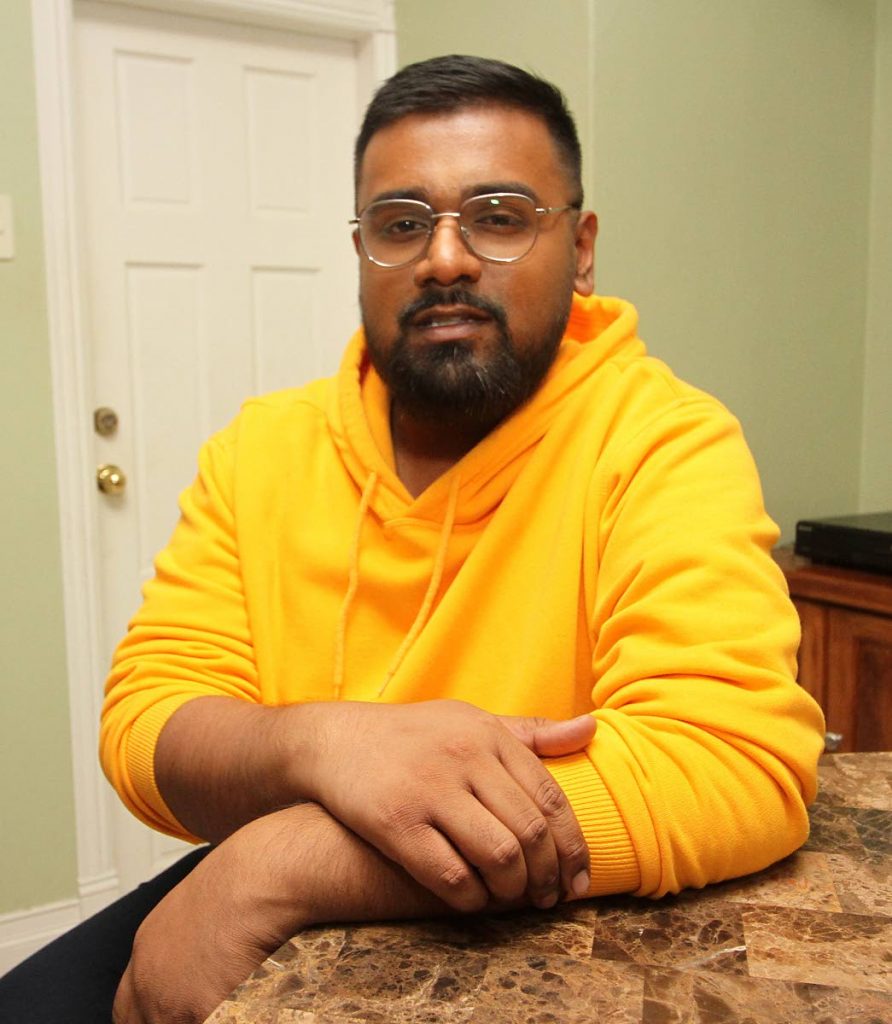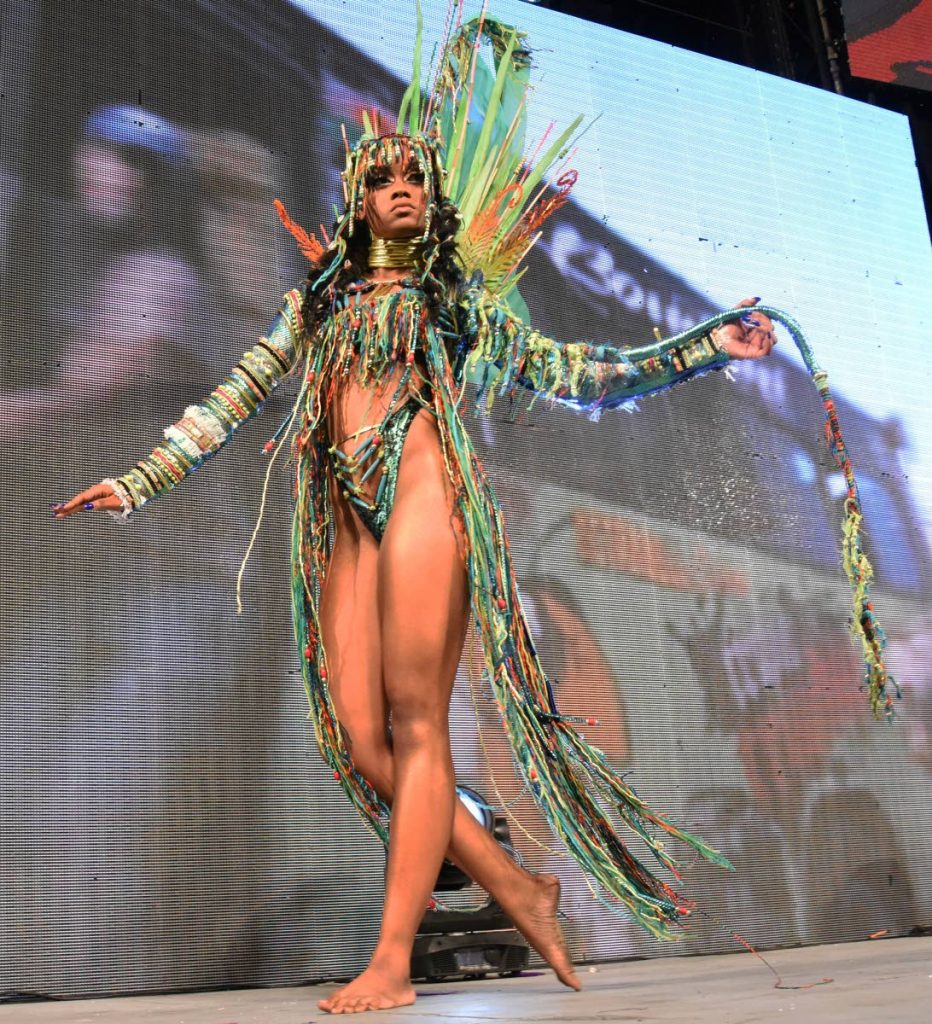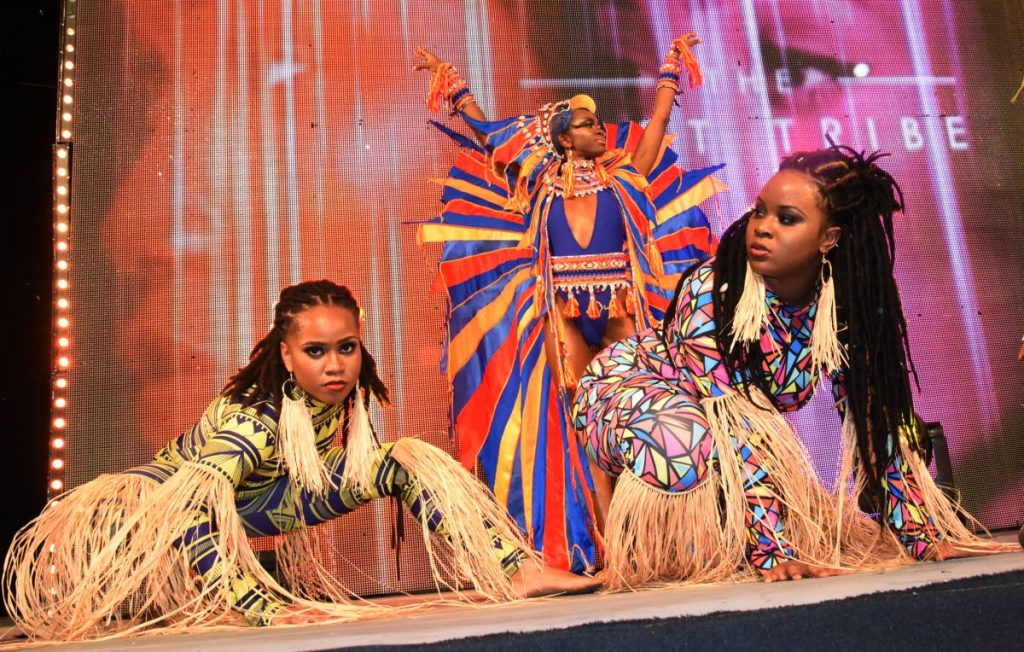The story continues

MICHELLE A ENG LEANG
Five years ago, Valmiki Maharaj knew he wanted more from Carnival. While he had immersed himself in all things feathers, bikinis and beads under the Tribe umbrella, he knew that creatively he could stretch his bandwidth even further when it came to mas. That's the start of the story of the Lost Tribe.
To date, it’s been a successful one. The band, part of Carnival powerhouse the Tribe Group, won the large band category as well as downtown band of the year this past Carnival.
“I could have never guessed five years ago that the Lost Tribe would have reached where it is right now. Then again, it also doesn’t seem like that long ago, so the momentum is really amazing.” Maharaj is the executive creative director of the Lost Tribe, and for him it's about doing what feels right. His instincts have been on point: In year one, the band had 500 masqueraders. By year four, that grew to nearly 2,000.
The secret is the story.
“The concept and the idea of a story is so strong, and it is always our focus at the Lost Tribe. A story is a river of love that connects generation to generation. It connects us to our past and our future, building the foundation of morality in society.”
Storytelling is much needed in this society at the moment, he feels.
“It’s a big discussion. Why are we getting on so bad as a people? Why is there so much crime? Is it that we are losing touch with our sense of community and the stories that were told?”
With this on his mind, Maharaj wanted the Lost Tribe to take ownership of something meaningful. He remembers chatting with his friend and Lost Tribe masquerader Abeo Jackson, and asking her what the band and the brand meant to her.
“Bliss is a band of prestige and elegance. Tribe is the party band. What is the Lost Tribe?”
He knew it was a young band. He also knew what he felt. But he was curious as to what the band meant to others.
“She said the Lost Tribe will always be the storytelling band. There is so much truth in that. When she said it, it immediately connected with what I was feeling about all the stories I had learned from my family and their relevance today.”
Anansi, the band’s theme for 2020, was one of those stories.
The Lost Tribe’s process is different from that of the other bands under the Tribe umbrella.
“We design a year and a half in advance. That may seem early but if Carnival 2021 is launched in 2020, and I wait until after Carnival, I wouldn’t have enough time to get it done and get prototypes completed. Our design process is a lot more intricate.”
The first part of the process is for designers to go off and research the theme.
“When I meet with the designers, I explain the concept of stories to them. For our three 'years of love,' the first year was a love of heartbreak; the second, a love of grief and obsession; and the third, family love, which is a love that we cannot deny – a love that is connected by stories.”
The animals chosen for Anansi didn’t have to be the main protagonists from the traditional stories, but present in some form, as each element in a story has its purpose.
“Each of these animals and the way the Anansi stories were created and told represent human characteristics.”

He told his designers to choose an animal they identified with, whether it be from a design aesthetic or a personality. How the animals are translated into costuming takes inspiration from different African tribes and African-inspired materials.
“We’re using a lot more wool this year, a lot more pom poms, shells and that kind of thing. We also have two sections that are not animals (but still elements of the story) – Sky God and Humanity.”
The Lost Tribe has earned a reputation for catering to all. Is that still a priority for the band now that the prizes have been won and masquerader count has more than tripled? Maharaj says yes.
“The Lost Tribe designs for everybody and I know that sounds so cliché, but it's true. When we design the band as a whole, you will have sections that would be – and I don’t like the word ‘skimpy' – but let’s say skimpier than others. You will have sections that are more clothed. You will have sections with backpacks and headpieces. Some people don’t like to hold anything while some people don’t like things on their backs. You have choices and even then, every section has options.
"No matter what the options are, the band is always about design. I will not move from being trapped in a box of bikini and beads and feathers to trap myself a box of monokinis and capes." His commitment to this is clear.
“This year our inspiration came from the African tribes and the way that they dress. With the section Erin, when Shawn Dhanraj, the designer, and I met about it, we wanted the idea of that elephant’s skin to come out. We wanted you to feel like its skin, body and ears were a part of the design.
"But what a lot of people don’t realise, with this costume in particular, is that it is a full body suit made in the Carnivalista mesh netting, which a lot of women, particularly plus-sized women, wear, because it helps with the camouflaging and so forth of different areas. You receive a bra to wear under it, so you get that support for any size. So it’s a monokini, with arm pieces and tights that, when you put together, covers the entire body in a very attractive way.”
Even though every band under the Tribe umbrella has its strengths, Maharaj believes the Lost Tribe is most accommodating when it comes to design.
Maharaj has been designing with Tribe for years. The first section he designed was for the 2009 presentation, Birds of a Feather, for which he designed two individual costumes, Snowy Owl and Persian Frilled Canary, covered in Swarovski crystals. It was also his first year playing mas with the band and his last year in university. (Maharaj attended the School of Business and Computer Science and has a degree in business management from the University of London.)

“I did well in school, I got honours. But I’ve always been interested in design. I can draw, paint, everything. Did it all in high school. I remember I told Mummy when I got older I was going to fashion school and she said, ‘Nope, you’re going to medical school or law school. I am not paying for you to go and do a hobby.’"
He fought it out with his mother and finally decided that he didn’t want to throw his life away. “I decided to go to business school, as I knew I wanted to start a business here.”He also started to work on projects such as TT Fashion Week.
“I was just...immersing myself in the fashion industry whilst in school, and it changed my whole perspective in terms of what I wanted to do.
"So then I picked up myself very randomly and decided to take my portfolio around to the different mas camps. It was never about designing a costumes, I just wanted experience. I love Carnival: why not work in it?”
As a masquerader playing with Harts, he started there. “I remember I was told very politely to try other places. So I tried Tribe." Eleven years later, he's still there. He didn't start designing immediately, but kept in touch with top Tribe executives like group CEO Dean Ackin and his wife, Monique Nobrega.
"I would send them an e-mail every year telling them what was going on and they would always respond saying how happy they were to hear about my progress. And then one day, Dean called and says Monique wants two costumes, can you come and meet her tomorrow?'"
He took about ten designs to the meeting and impressed Nobrega with his art skills – enough to take a chance on him. Many designers today don’t draw, he noted, and his art skills set him apart. “People are very tactile, so they are more aware of the materials they want to use and then decide how to cut and place. With me, I design concept first and then morph it into materials.”

He remembers his first costume 11 years ago. “It really was a struggle, because I had never made a costume in my life, and I knew nothing about (the process) really, the construct. "Monique has always been there for me to guide me along the process. She's the reason I am where I am today. She is one of my best friends and she taught me everything I know. Somehow the universe put us together.”
Eleven years on, Maharaj feels his experience has come full circle. “There was a point where I was so busy with Carnival that I stopped working on events and now I am involved in it again. Last year I opened Talent Bank, a creative consultancy that is coming out of the Lost Tribe experience and I have rejoined Ultimate Events as its creative head. I feel the opportunity and the need to offer someone a similar opportunity like what I was offered."
Just as Ackin gave him a chance. “I went to Dean and told him that creatively, I felt a bit stifled and that I wasn’t getting what I wanted out of designing for mas. He asked me what I wanted and that is when we started talking about the Lost Tribe.
"I thought about it all for a while. Then I said if we do it, this is how I want it to be. It is not going to be a (mas legends) Peter Minshall or a Wayne Berkeley or any of those things. It is going to be new.
"He loved the concept, recruited some more designers and said if the costumes come out good and it looks like something that would sell, we would launch the band."
The Lost Tribe debuted in 2015 and has grown in popularity every year since.
Maharaj admits the business is very different now from when he started, but he is grateful for every twist and turn, including his support system – a big part of which is his mother, Bas.
“Bas may not have always understood what I did or whether I made any money doing it, but she made sure I had a house over my head and food to eat, and even if I went to work every day and made no money, which in the earlier days I did, I had these things. That was the support I got that definitely paved the way for this opportunity to fully blossom."
This is his story, and he's not ready for it to finish. "I still learn so much every day that helps push me forward."


Comments
"The story continues"